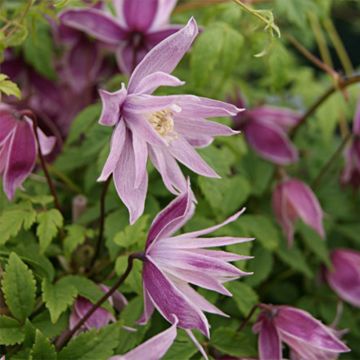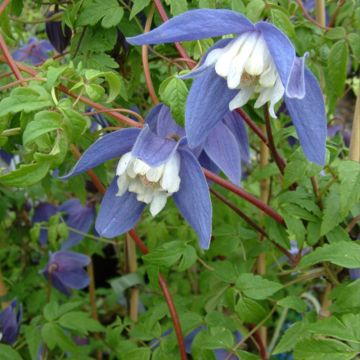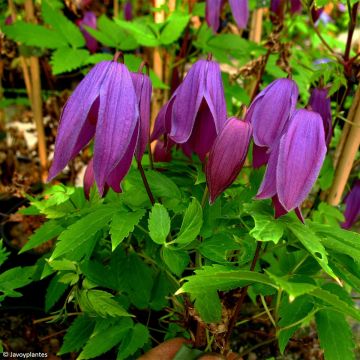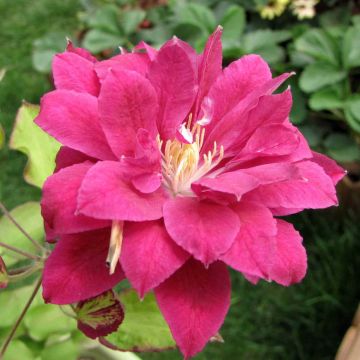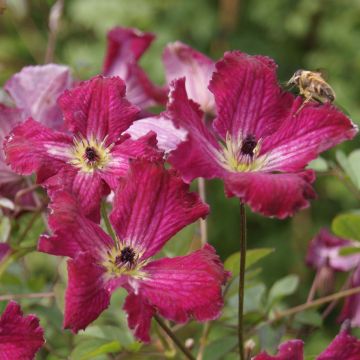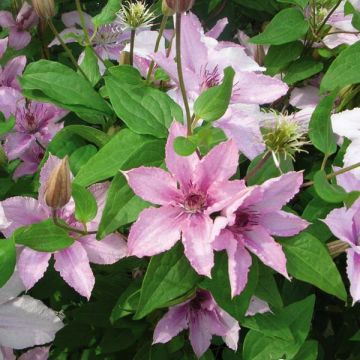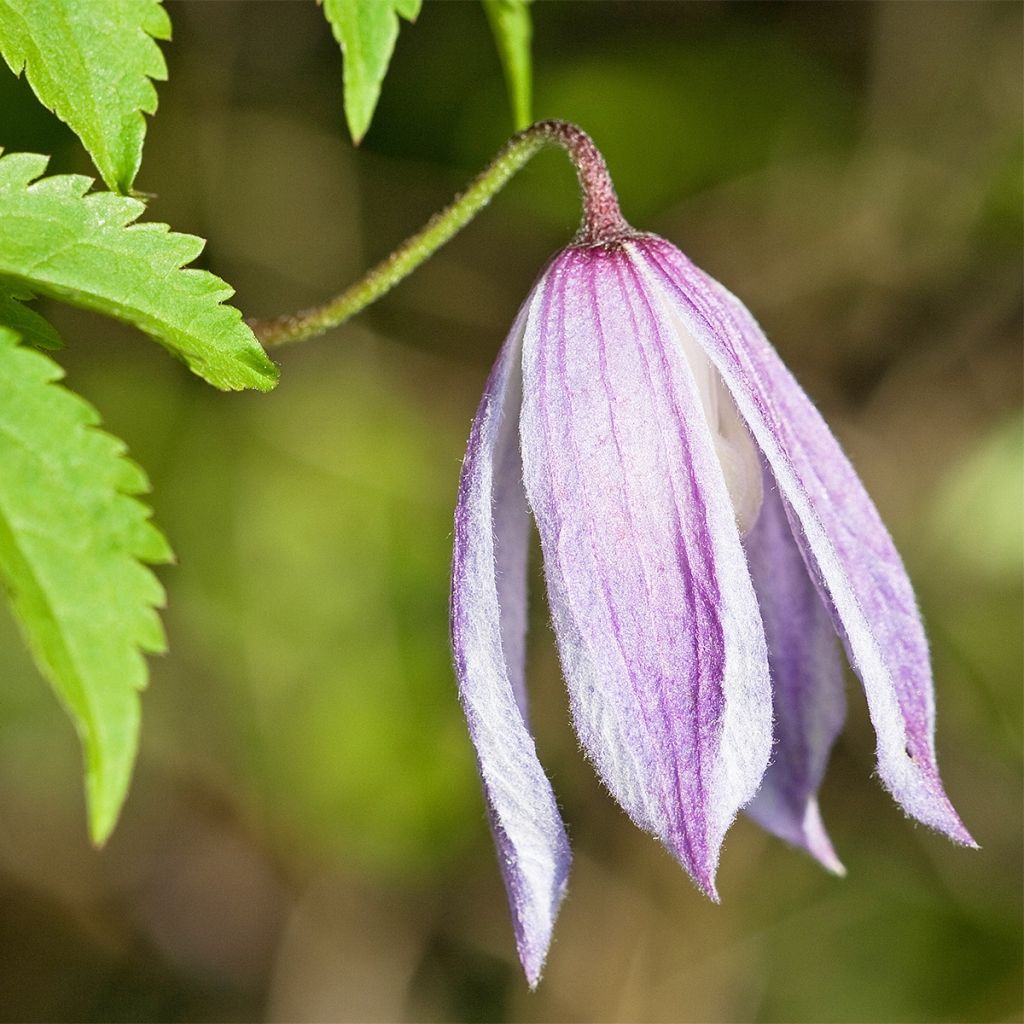

Clematis Willy
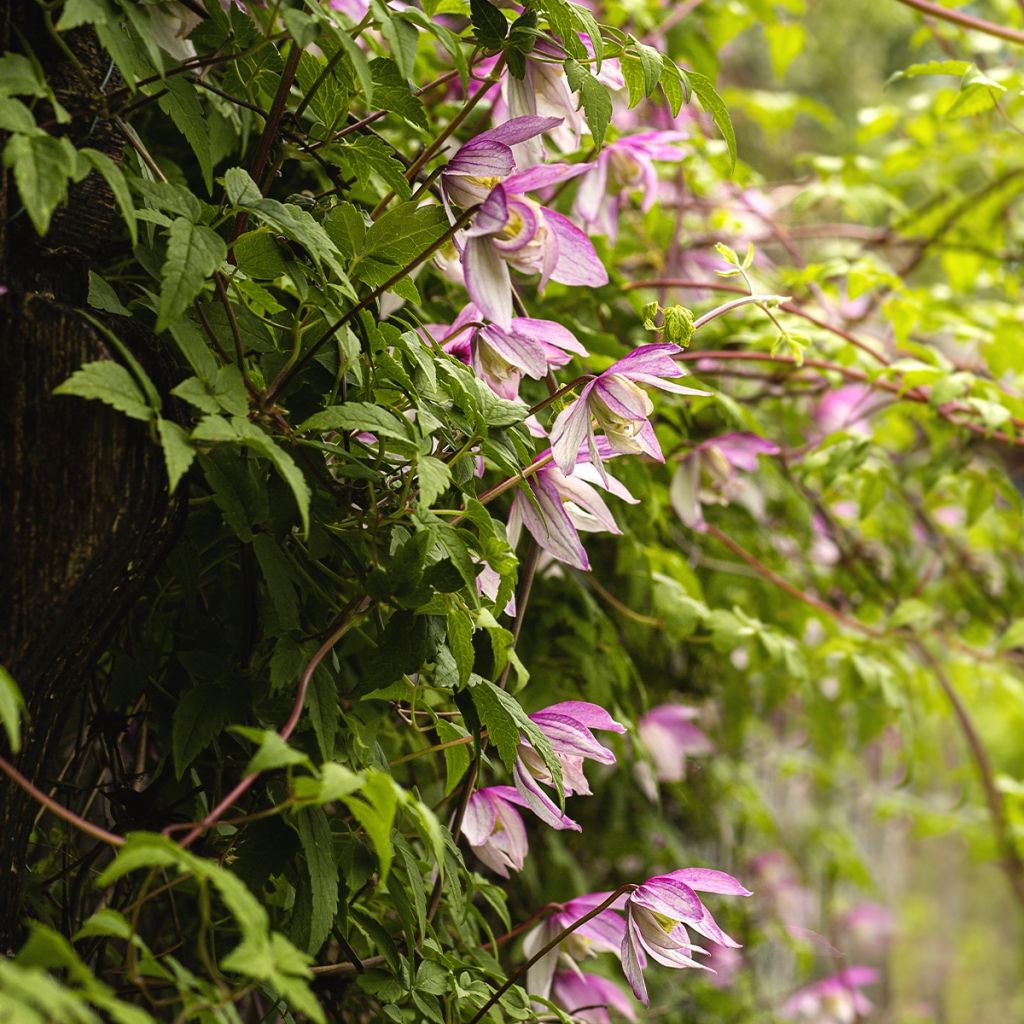

Clematis Willy
Clematis Willy
Clematis Willy
This item cannot be shipped to the selected country
Delivery charge from €5.90
More information
Schedule delivery date,
and select date in basket
This plant carries a 6 months recovery warranty
More information
We guarantee the quality of our plants for a full growing cycle, and will replace at our expense any plant that fails to recover under normal climatic and planting conditions.
From €5.90 for pickup delivery and €6.90 for home delivery
Express home delivery from €8.90.
Does this plant fit my garden?
Set up your Plantfit profile →
Description
Clematis 'Willy' is a variety of Clematis alpina or C. macropetala, prized for its delicate pink spring flowering, in harmony with flowering cherry and apple trees and magnolias that bloom at the same time. Its slender, bell-shaped flowers display a delicate gradient of pink, which is deeper at the centre and almost white at the tips of the petals. This lovely climber bears attractive foliage. It is easily grown in moist garden soil. It is a hardy and wandering plant that prefers to spread over shrubs and lower plants rather than climb on a support.
The genus Clematis belongs to the Ranunculaceae family. 'Willy' is a horticultural variety obtained by Pieter Zwijnenburg in 1971 in the Netherlands. It belongs to the group of Atragene clematis (Clematis alpina and C. macropetala), which bloom in spring on the previous summer's growth. It is a semi-woody, climbing or creeping perennial plant that reaches a height of 3m (10ft) with a spread of 1m² (3ft²). This delicate-looking plant has inherited great robustness from its wild ancestors. It is not afraid of late frosts.
From April to May, 'Willy' bears alpina-type bell-shaped flowers, 5 to 6cm (2in) in diameter. It sometimes boasts a second flowering in summer on new shoots. The bisexual flowers are solitary or grouped in clusters and hang downwards. They open mainly on the upper half of the plant. The corollas have four thin and delicate tepals that are very pale-pink with a pinker base. The flowering is followed by decorative feathery fruits, which are greyish with a silvery touch. The fruits remain on the plant until winter. The leaves are divided into 3 to 5 bright green leaflets with dentate edges. This clematis clings to the support or host plant by means of petioles transformed into tendrils. The deciduous leaves dry up in winter.
Plant your clematis alongside climbing roses to extend the flowering period of walls and pergolas until the end of summer. This is a genus rich in diversity, with flowers of all colours, shapes, and sizes. Take advantage of their easy cultivation to give your garden a romantic and bohemian touch. 'Willy' is easily grown in the garden. Thanks to its relatively modest size, 'Willy' will also thrive in a pot on a balcony or next to a door to welcome visitors with its early and spectacular flowering. It can also be left to run along the ground, where it will form a unique blooming carpet in spring.
Report an error about the product description
Clematis Willy in pictures


Plant habit
Flowering
Foliage
Botanical data
Clematis
Willy
Ranunculaceae
Cultivar or hybrid
Other Clematis Atragene
Planting and care
Ideally, plant Clematis 'Willy' in the sun, in fertile, humus-rich, well-drained soil, shading the roots and base of the stem (with a flat tile for example). Herbaceous species prefer full sun and wilt in overly moist soil.
Work the soil to a depth of 20cm (8in), and lighten it with good compost. Position the plant and cover the root ball with 3cm (1in) of soil. Cover the base of climbing clematis with a small mound of soil, reducing the risk of wilting while promoting vigorous shoots from the stump. After planting, prune the stems of deciduous climbing clematis to about 30cm (12in) above a pair of buds. Water generously and regularly during the first few weeks. Do not overwater as this can lead to the development of a fungus at the collar. Mulch in February with garden compost or well-rotted manure, avoiding direct contact with the stems.
Train the stems, without tightening them, until the plant can grip on its own. Clematis also enjoy growing freely on neighbouring plants.
This variety flowers in spring on the current summer's growth. Prune it in June, after flowering, to 80cm (32in) from the ground (slightly shorter on older plants), once the plant is well established.
Voles and grey worms can attack clematis and devour the stems. Aphids and greenhouse whiteflies are also potential parasites.
Planting period
Intended location
Care
This item has not been reviewed yet - be the first to leave a review about it.
Clematis
Haven't found what you were looking for?
Hardiness is the lowest winter temperature a plant can endure without suffering serious damage or even dying. However, hardiness is affected by location (a sheltered area, such as a patio), protection (winter cover) and soil type (hardiness is improved by well-drained soil).

Photo Sharing Terms & Conditions
In order to encourage gardeners to interact and share their experiences, Promesse de fleurs offers various media enabling content to be uploaded onto its Site - in particular via the ‘Photo sharing’ module.
The User agrees to refrain from:
- Posting any content that is illegal, prejudicial, insulting, racist, inciteful to hatred, revisionist, contrary to public decency, that infringes on privacy or on the privacy rights of third parties, in particular the publicity rights of persons and goods, intellectual property rights, or the right to privacy.
- Submitting content on behalf of a third party;
- Impersonate the identity of a third party and/or publish any personal information about a third party;
In general, the User undertakes to refrain from any unethical behaviour.
All Content (in particular text, comments, files, images, photos, videos, creative works, etc.), which may be subject to property or intellectual property rights, image or other private rights, shall remain the property of the User, subject to the limited rights granted by the terms of the licence granted by Promesse de fleurs as stated below. Users are at liberty to publish or not to publish such Content on the Site, notably via the ‘Photo Sharing’ facility, and accept that this Content shall be made public and freely accessible, notably on the Internet.
Users further acknowledge, undertake to have ,and guarantee that they hold all necessary rights and permissions to publish such material on the Site, in particular with regard to the legislation in force pertaining to any privacy, property, intellectual property, image, or contractual rights, or rights of any other nature. By publishing such Content on the Site, Users acknowledge accepting full liability as publishers of the Content within the meaning of the law, and grant Promesse de fleurs, free of charge, an inclusive, worldwide licence for the said Content for the entire duration of its publication, including all reproduction, representation, up/downloading, displaying, performing, transmission, and storage rights.
Users also grant permission for their name to be linked to the Content and accept that this link may not always be made available.
By engaging in posting material, Users consent to their Content becoming automatically accessible on the Internet, in particular on other sites and/or blogs and/or web pages of the Promesse de fleurs site, including in particular social pages and the Promesse de fleurs catalogue.
Users may secure the removal of entrusted content free of charge by issuing a simple request via our contact form.
The flowering period indicated on our website applies to countries and regions located in USDA zone 8 (France, the United Kingdom, Ireland, the Netherlands, etc.)
It will vary according to where you live:
- In zones 9 to 10 (Italy, Spain, Greece, etc.), flowering will occur about 2 to 4 weeks earlier.
- In zones 6 to 7 (Germany, Poland, Slovenia, and lower mountainous regions), flowering will be delayed by 2 to 3 weeks.
- In zone 5 (Central Europe, Scandinavia), blooming will be delayed by 3 to 5 weeks.
In temperate climates, pruning of spring-flowering shrubs (forsythia, spireas, etc.) should be done just after flowering.
Pruning of summer-flowering shrubs (Indian Lilac, Perovskia, etc.) can be done in winter or spring.
In cold regions as well as with frost-sensitive plants, avoid pruning too early when severe frosts may still occur.
The planting period indicated on our website applies to countries and regions located in USDA zone 8 (France, United Kingdom, Ireland, Netherlands).
It will vary according to where you live:
- In Mediterranean zones (Marseille, Madrid, Milan, etc.), autumn and winter are the best planting periods.
- In continental zones (Strasbourg, Munich, Vienna, etc.), delay planting by 2 to 3 weeks in spring and bring it forward by 2 to 4 weeks in autumn.
- In mountainous regions (the Alps, Pyrenees, Carpathians, etc.), it is best to plant in late spring (May-June) or late summer (August-September).
The harvesting period indicated on our website applies to countries and regions in USDA zone 8 (France, England, Ireland, the Netherlands).
In colder areas (Scandinavia, Poland, Austria...) fruit and vegetable harvests are likely to be delayed by 3-4 weeks.
In warmer areas (Italy, Spain, Greece, etc.), harvesting will probably take place earlier, depending on weather conditions.
The sowing periods indicated on our website apply to countries and regions within USDA Zone 8 (France, UK, Ireland, Netherlands).
In colder areas (Scandinavia, Poland, Austria...), delay any outdoor sowing by 3-4 weeks, or sow under glass.
In warmer climes (Italy, Spain, Greece, etc.), bring outdoor sowing forward by a few weeks.




































